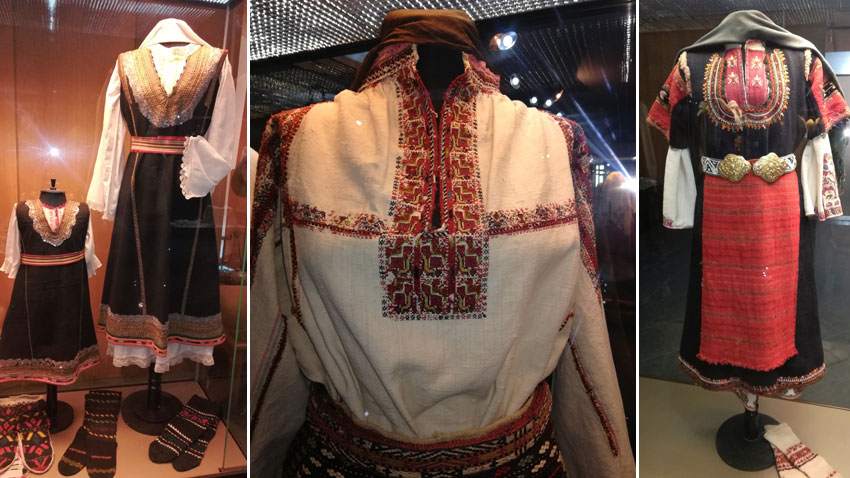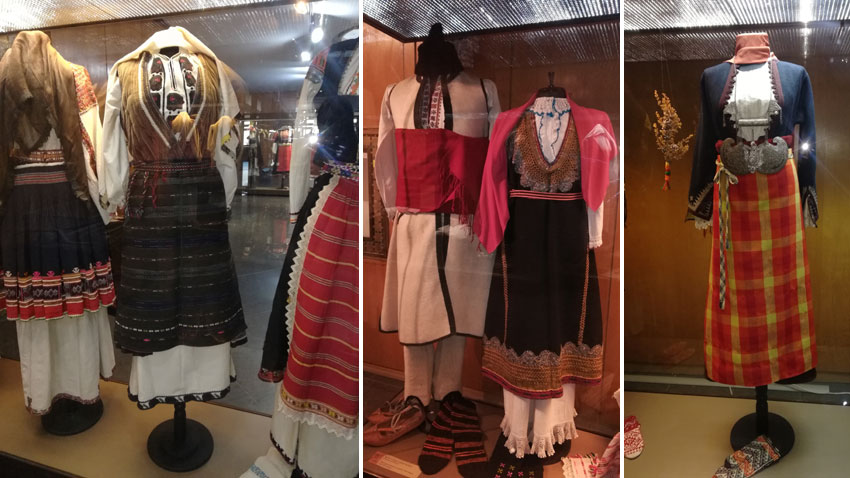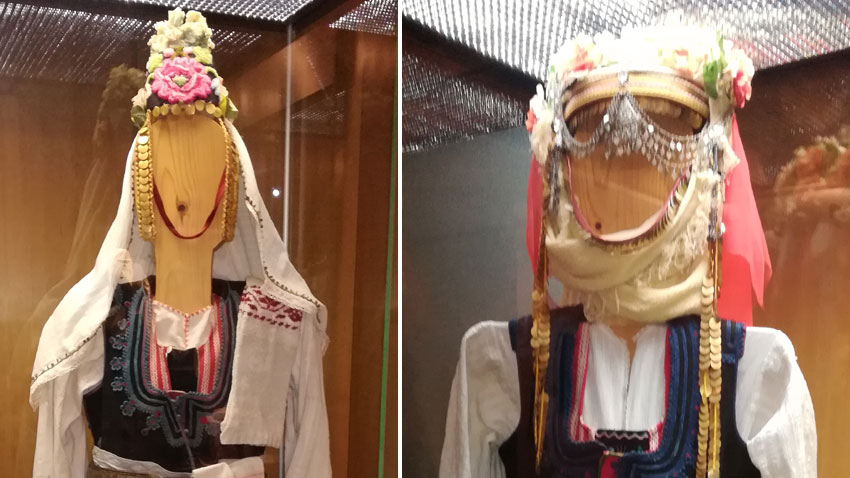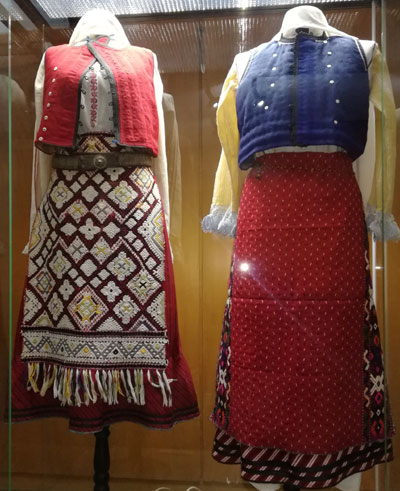Through the ages,Bulgarian women earned a reputation as hard-working, but also talented and with a keen sense of beauty. All of these traits were in evidence in the traditional Bulgarian clothes, especially women’s garments. Women would weave the fabrics themselves, decorate them with embroidery using hand-dyed thread, and they gave reign to their imagination while preserving ancient motifs and passing them down to the next generations. The different varieties of traditional costumes indicated which ethnographic region the woman came from, which family, and many other things. But after the liberation of Bulgaria from Ottoman domination in 1878, the way women in Bulgaria dressed underwent considerable change.
Here is more from ethnographer Ellie Gutseva:
“Until the time of the liberation, Bulgarian women wore the traditional costume mostly in villages. It consisted of chemise and outer skirt open at the front (called saya), or one-piece pinafore. The chemise was lavishly embroidered, and covering the head was an important element of the way a married woman dressed. The costume included accessories, like socks, apron, sash, belt and items of jewellery which depended on the woman’s social standing and whether she was married or not.”

But there was a big difference in towns, where, even before the liberation new elements of clothing were introduced – from Istanbul into the southern parts of Bulgaria and from Vienna into northern Bulgaria and Sofia – and they changed the structure of women’s wear in the country. It should not be forgotten that wealthy Bulgarians travelled to towns like Vienna and Paris and other fashion capitals of Europe. In well-to-do families it was a matter of prestige to own clothes that were, one way or another, connected with European fashion. In villages change was slower and affected most of all the decoration on clothing.
“The embroidery which was very labour-intensive and which was imbued with a great deal of symbolism through the period of the National Revival, was beginning to decline, to be replaced by lacing on sleeve rims and skirt hemline. In villages the items of jewellery continued to convey different meanings, though they were no longer ornate or made of precious metals,” Ellie Gutseva says.

Headscarves, completely covering the hair or leaving just part of it loose – the distinguishing mark of a married woman – were also on their way out.
“Covering the hair with a headscarf was preserved most of all as a ritual function in some traditions – “lazaruvane”, wedding rituals,” Ellie Gutseva explains. “In towns hats were in and there was a period when they were very popular, taking all sorts of flamboyant and fantastic shapes and sizes. But by the 1920s and 1930s things had definitely changed radically.”

And there was one more important change – in the fabrics and colours. What changed at the close of the 19th century, before and after the liberation, and at the beginning of the 20th century?
 “The tendency in fabrics and colours has always been to take the simplest elements, most often things that occur in nature, like natural hues. Bulgarian women wore a white cotton or hemp shirt, and later, in wealthier areas – shirts with silk sleeves. Until the time when clothes were made not out of hand-woven fabrics, but out of fabrics bought at the store. Dyeing was also part of the life of women in Bulgaria, they used a lot of vegetable dyes – a case in point is the colour red, attained using a dye derived from an insect – kermes. At the end of the 19th and the beginning of the 20th century specialized handicrafts appeared connected with the making of some of the items worn by women. More and more often ready-made articles were used and hand-weaving was a practice confined to villages. And this, in combination with the industrialization and the fact that women had more things on their hands – especially in cities, where they just didn’t have the time to weave fabrics for their own clothes.”
“The tendency in fabrics and colours has always been to take the simplest elements, most often things that occur in nature, like natural hues. Bulgarian women wore a white cotton or hemp shirt, and later, in wealthier areas – shirts with silk sleeves. Until the time when clothes were made not out of hand-woven fabrics, but out of fabrics bought at the store. Dyeing was also part of the life of women in Bulgaria, they used a lot of vegetable dyes – a case in point is the colour red, attained using a dye derived from an insect – kermes. At the end of the 19th and the beginning of the 20th century specialized handicrafts appeared connected with the making of some of the items worn by women. More and more often ready-made articles were used and hand-weaving was a practice confined to villages. And this, in combination with the industrialization and the fact that women had more things on their hands – especially in cities, where they just didn’t have the time to weave fabrics for their own clothes.”
That was how little by little but unavoidably, the traditional attire of women after the liberation of Bulgaria changed, and was gradually refashioned into contemporary European-style urban garments.
English version: Milena Daynova
Photos: Desislava Semkovska
Days of Bulgarian culture will be organized in Madrid between November 9 and December 31, 2024, BTA reported, citing Latinka Hinkova, president of the Association of Bulgarians and Artists "TREBOL" and head of two Bulgarian Sunday schools in Torrejon de..
The national awakeners of Bulgaria are the individuals for whom we feel not only gratitude and admiration, but also perceive as some of the most significant figures in our history, because they awaken our sense of national togetherness. However, what is..
People with mental disabilities will share their unique perspective on Sofia's architectural heritage in the photographic exhibition "Architectural Stories from Old Sofia". It will be opened on November 1 in the Cultural Space of the Central Sofia Market..

+359 2 9336 661
